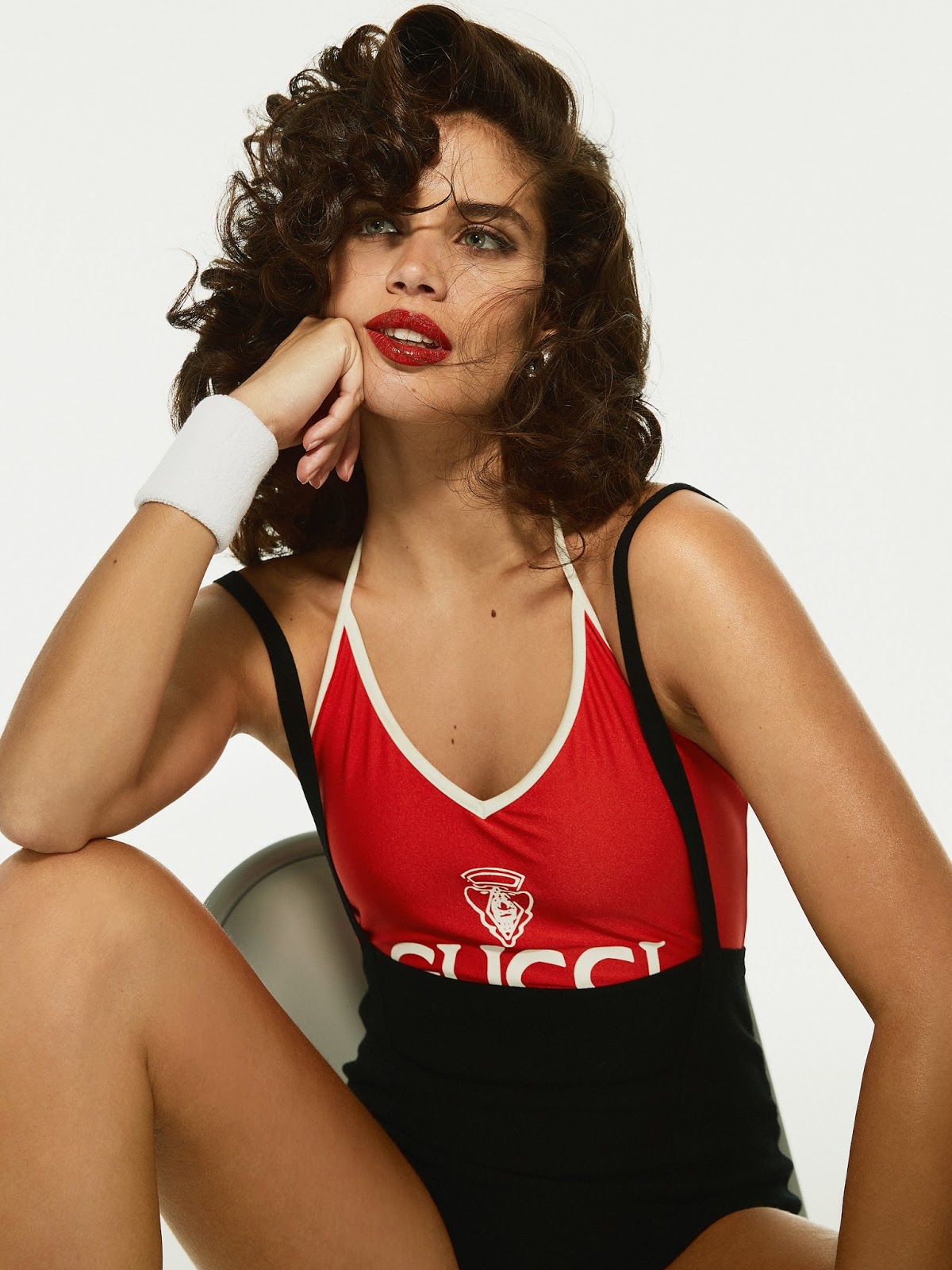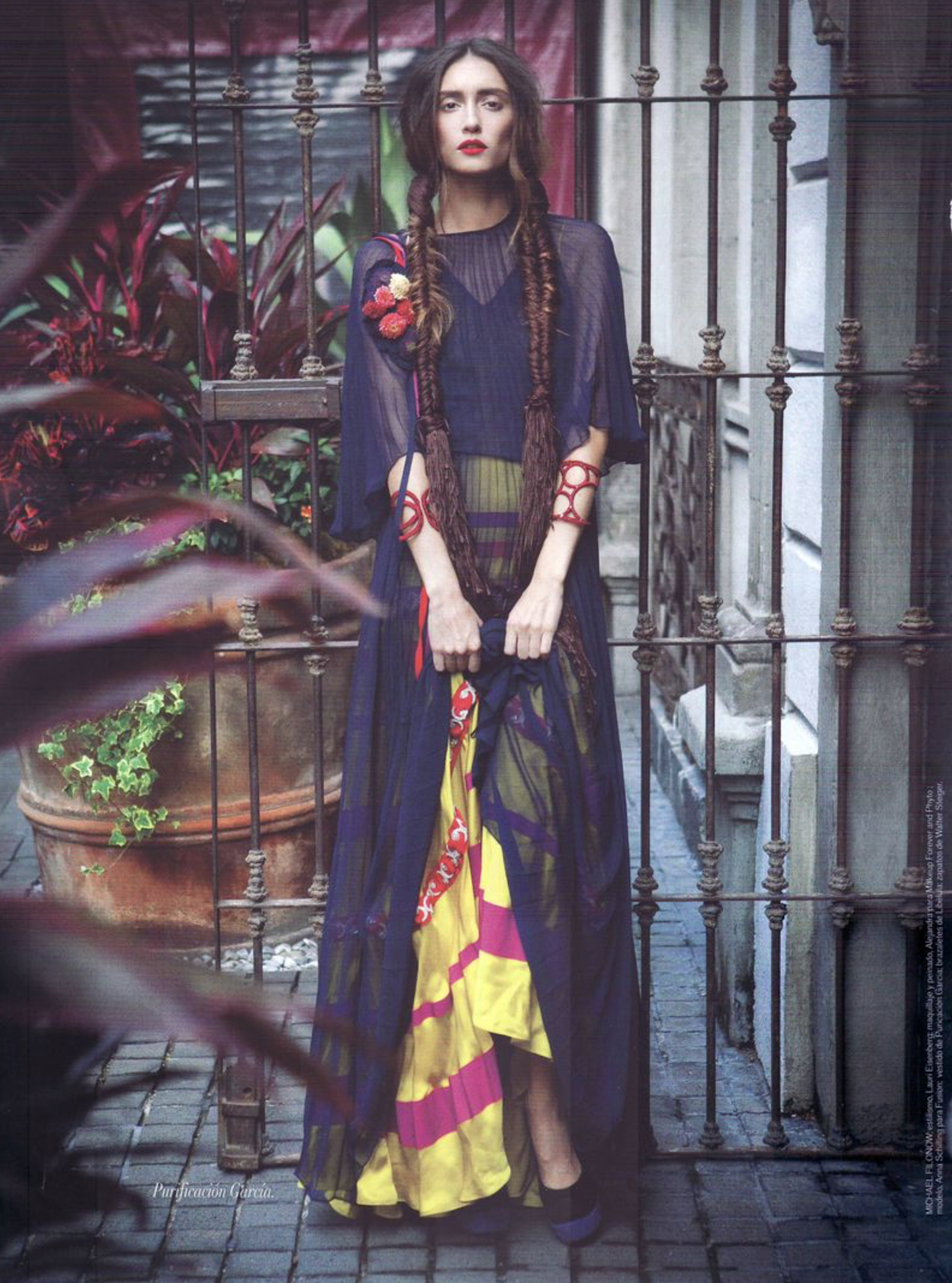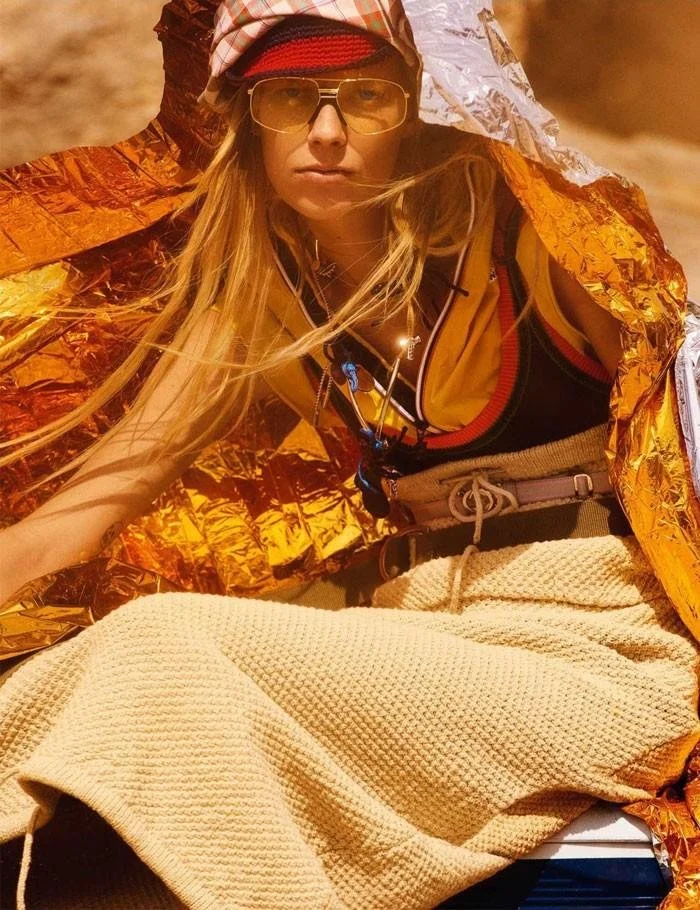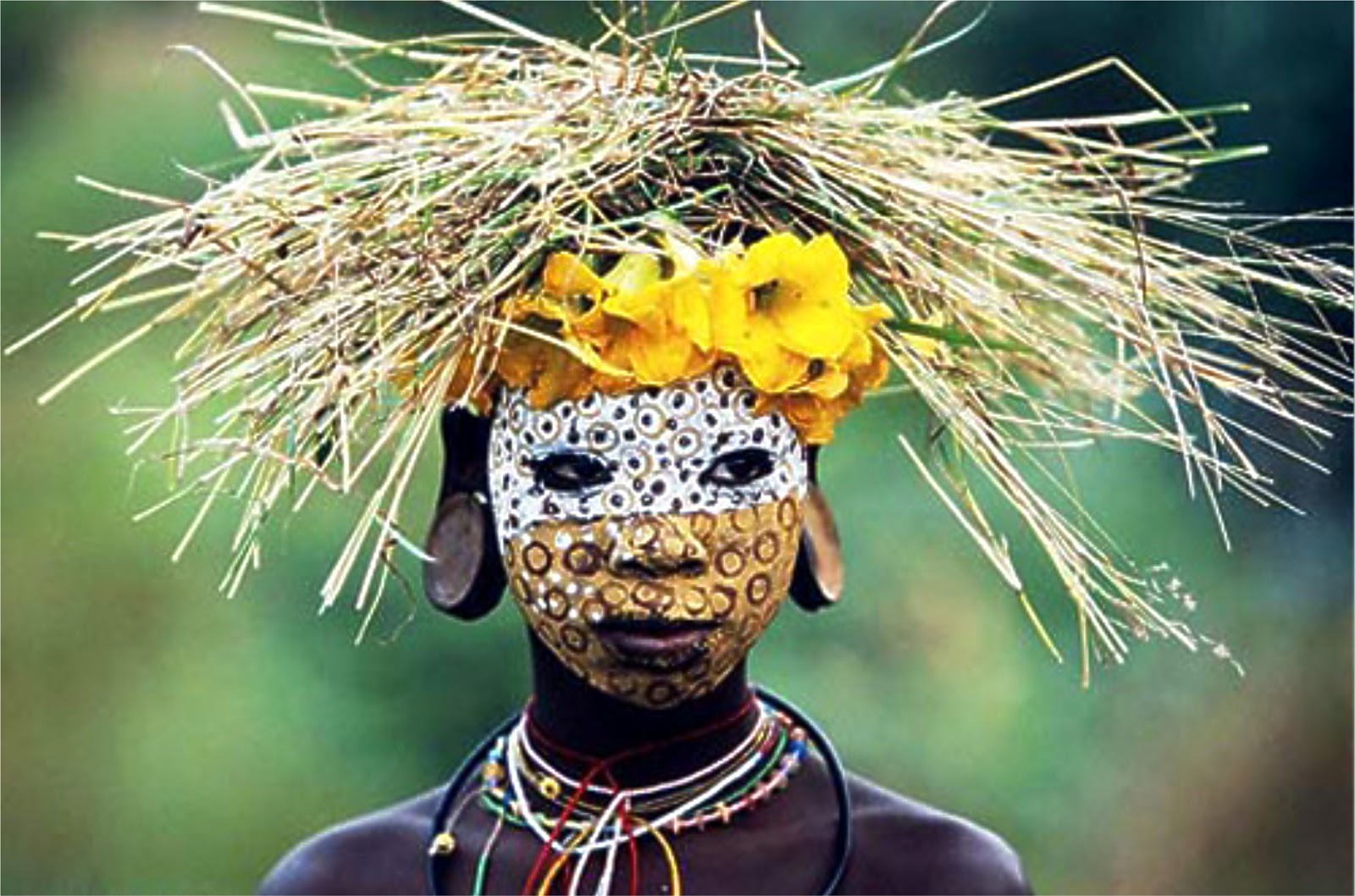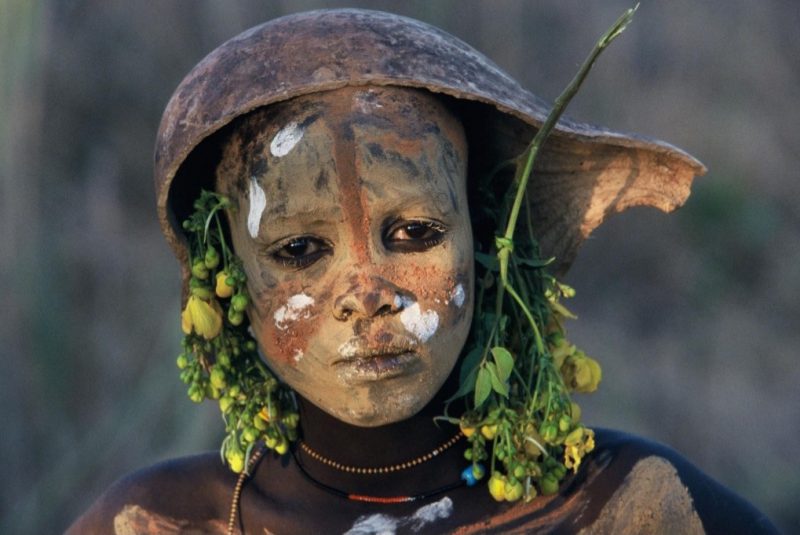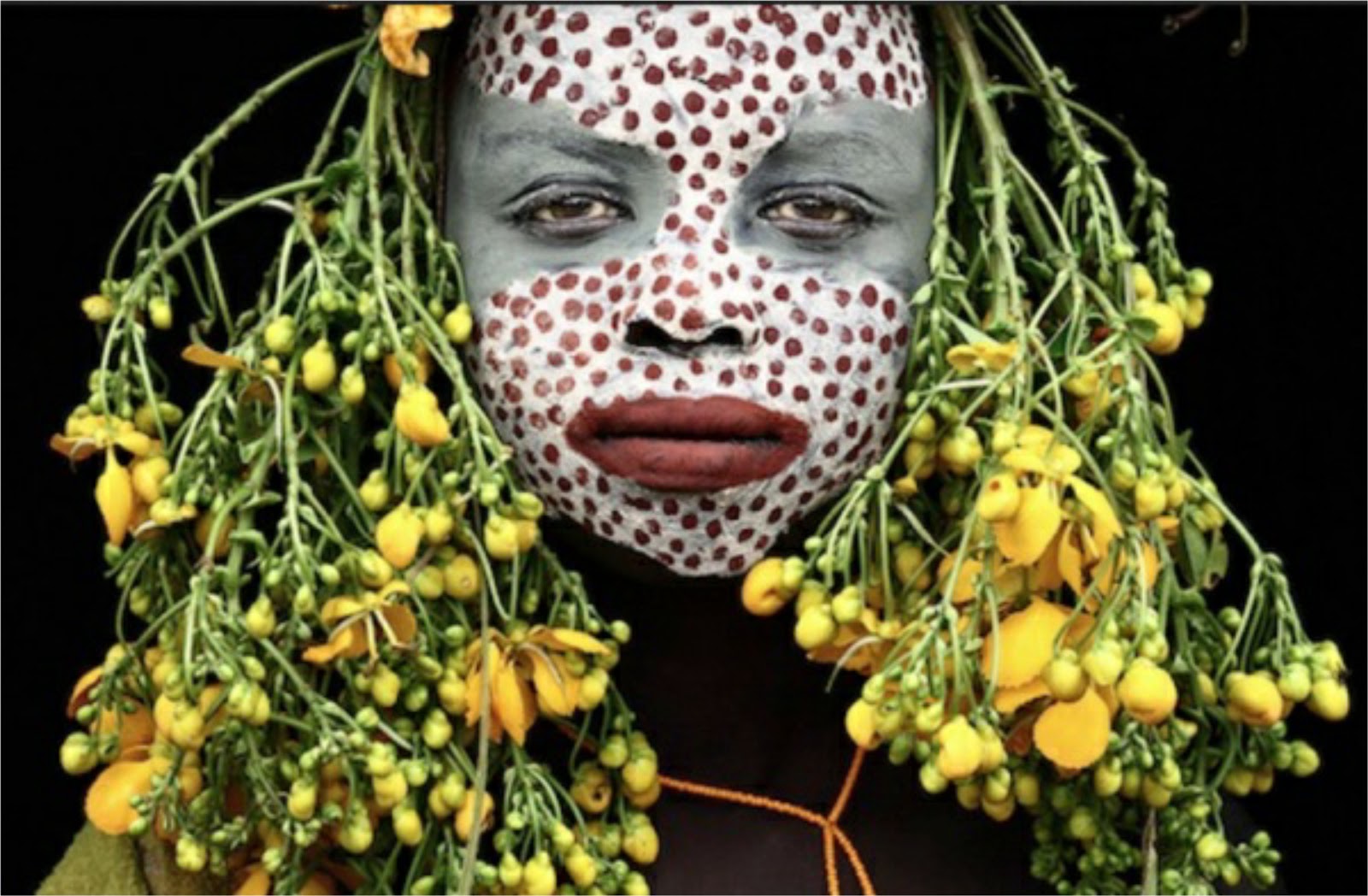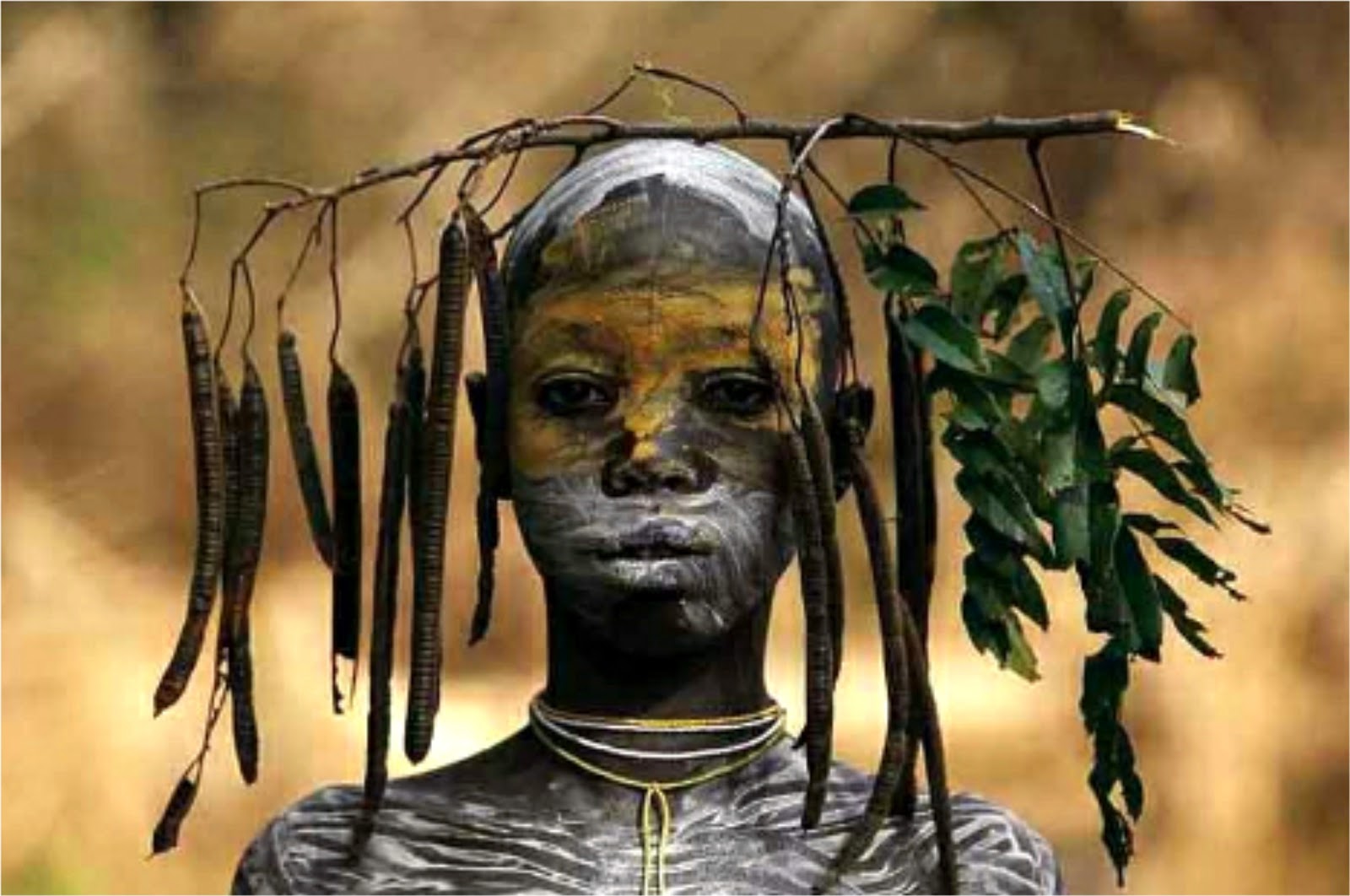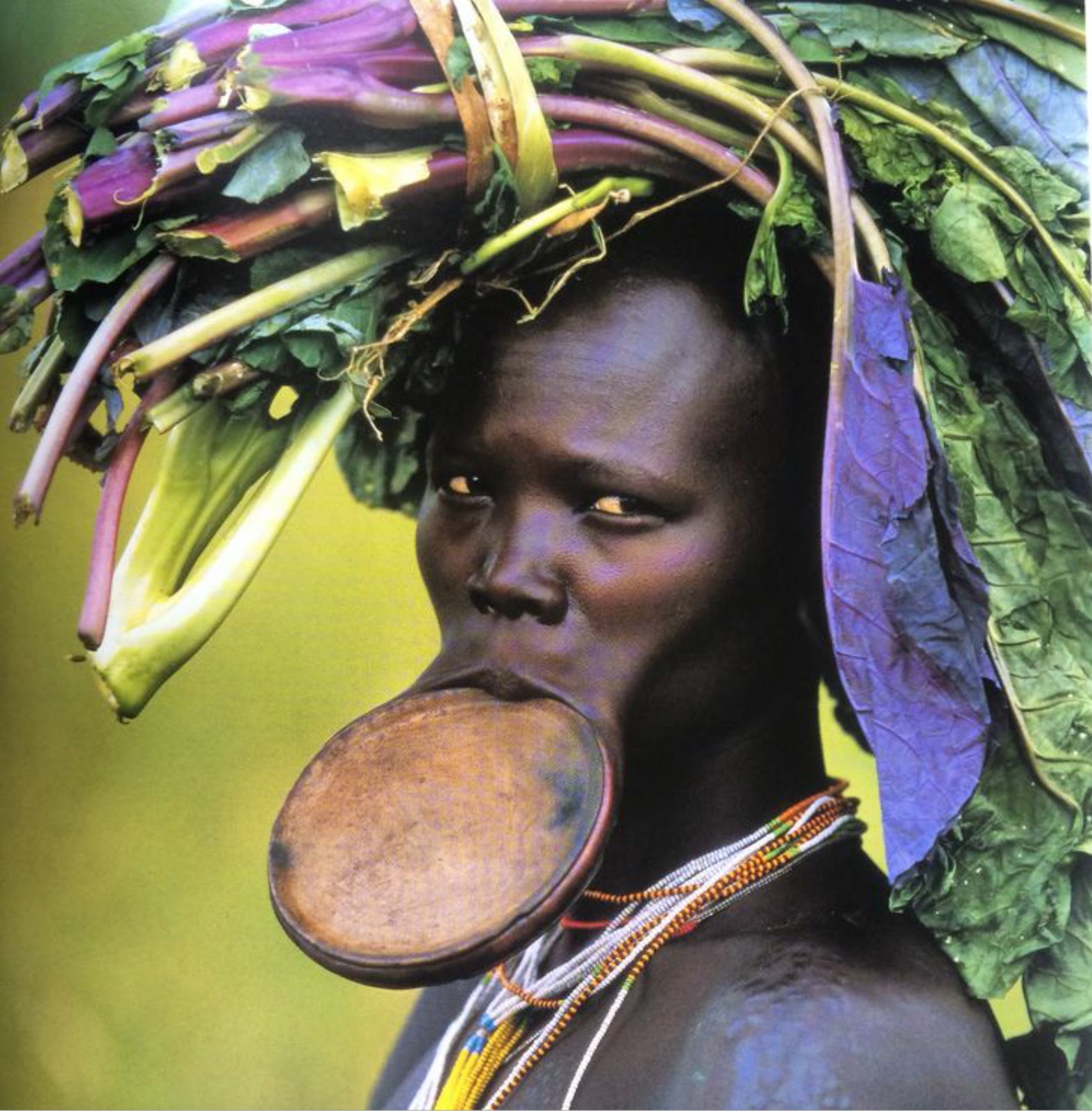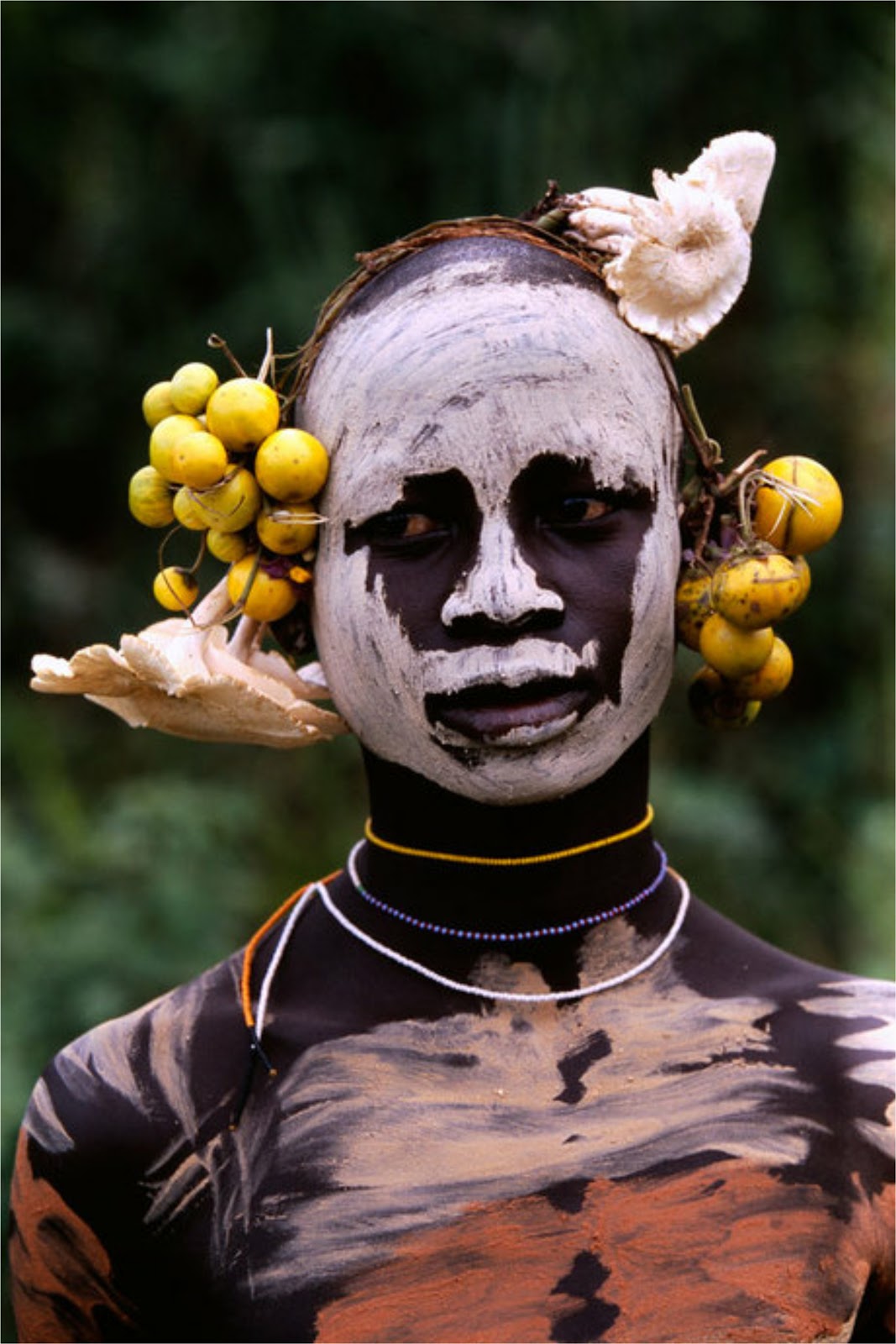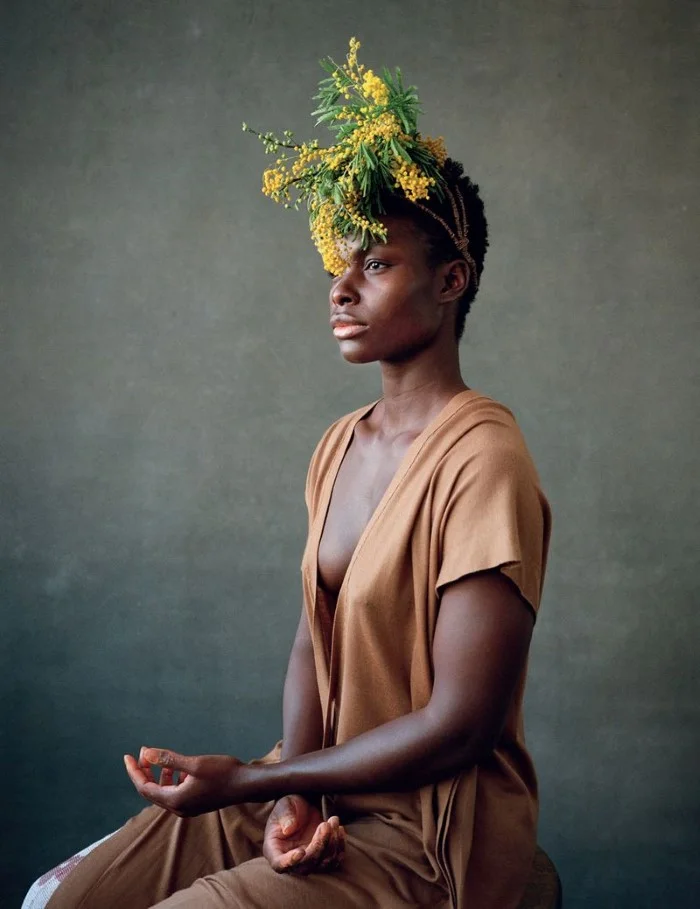The Omo Valley's Surma + Mursi Tribes, Vintage 2008, In Hans Silvester's Own Words
/~ Hans Silvester: “Natural Fashion, Tribal Decoration from Africa” (2008)
As a design person, no book has influenced me more in life than Hans Silvester’s 2008 book ‘Natural Fashion, Tribal Decoration from Africa.’ His images of members of the Surma and Mursi tribes, the product of 12 trips into the isolated Omo Valley in southern Ethiopia, have become legendary.
Many of the people commenting on on the Silvester images don’t own the book and have not seen them in art galleries. I fear that much of their original meaning and importance is being lost in the muck, so to speak. For this reason, I want to attach Hans Silvester’s own words to the images, and this is my first effort. ~ Anne
~ Hans Silvester: “Natural Fashion, Tribal Decoration from Africa” (2008)
An arena of incessant tribal and guerilla warfare, and a hotbed for the arms and ivory trades, the Omo Valley nevertheless plays host — when the Kalashnikovs fall silent — to some astonishing events of a much more peaceful nature.
~ Hans Silvester: Art and the Body Introduction to Natural Fashion, Tribal Decoration from Africa
~ Hans Silvester: “Natural Fashion, Tribal Decoration from Africa” (2008)
Among the fifteen tribes that have lived in this Rift region since time immemmorial, the Surma and the Mursi, two tribes that get on well together, share a taste for body painting and extravagant decorations borrowed from nature.
~ Hans Silvester: Art and the Body Introduction to Natural Fashion, Tribal Decoration from Africa
~ Hans Silvester: “Natural Fashion, Tribal Decoration from Africa” (2008)
These displays often have a practical origin, such as protection against the sun. Thus, when women walk from one village to another, they frequently carry a branch to provide themselves with some shade.
~ Hans Silvester: Art and the Body Introduction to Natural Fashion, Tribal Decoration from Africa
~ Hans Silvester: “Natural Fashion, Tribal Decoration from Africa” (2008)
Afterwards, they paint, decorate and embellish themselves with ingredients drawn from the vast store cupboard of Mother Nature. Renewed each day, these wonderfully inventive changes of appearance form a parade of African fashion that is as rich as it is ephemeral.
~ Hans Silvester: Art and the Body Introduction to Natural Fashion, Tribal Decoration from Africa
~ Hans Silvester: “Natural Fashion, Tribal Decoration from Africa” (2008)
Generally naked — only the women wear a tiny G-string — the bodies are smooth and supple, providing an extraordinary sculptural surface that is ideal for these works of art. Flesh becomes a raw material on which decorative fantasies can be played out.
~ Hans Silvester: Art and the Body Introduction to Natural Fashion, Tribal Decoration from Africa
~ Hans Silvester: “Natural Fashion, Tribal Decoration from Africa” (2008)
This decorative focus on the body, and its pre-eminence over the spatial environment and the surrounding world of objects, is strongly connected with nomadic lifestyles. The body is seen almost as a piece of territory, with skin and flesh replacing the stone, ceramics and textiles typical of other cultures.
~ Hans Silvester: Art and the Body Introduction to Natural Fashion, Tribal Decoration from Africa
~ Hans Silvester: “Natural Fashion, Tribal Decoration from Africa” (2008)
Nomads always have the ability to leave everything behind and travel. Except for their livestock — the only wealth they own — their possessions are limited to what they can carry on their lacks or shoulders. The inventory is short: a few plain pots of clay, some gourds, things to eat and drink, skins to lay out on the ground, and weapons — knives for the women and children, Kalashnikovs for the men.
~ Hans Silvester: Art and the Body Introduction to Natural Fashion, Tribal Decoration from Africa
~ Hans Silvester: “Natural Fashion, Tribal Decoration from Africa” (2008)
Their homes are very simple and made exclusively of plant materials. They do not use mud or clay, but only branches. The one item that is sometimes ornate is the headrest which old people use and which also serves as a stool.
~ Hans Silvester: Art and the Body Introduction to Natural Fashion, Tribal Decoration from Africa
~ Hans Silvester: “Natural Fashion, Tribal Decoration from Africa” (2008)
It is right beside the river, the lifeline of the region, that these decorative arts are at their most expressive. At the peak of the dry season, during the weeks that precede the arrival of the rains, the weather in these latitudes becomes extremely heavy, with temperatures around 45 °C (113 °F). At this time, much of village life takes place by the river, which is the only source of water for humans as well as animals. It is quite shallow, unlike the Omo, which is dangerous and infested with crocodiles, not to mention various species of lizard that sometimes haunt its little tributaries.
~ Hans Silvester: Art and the Body Introduction to Natural Fashion, Tribal Decoration from Africa
~ Hans Silvester: “Natural Fashion, Tribal Decoration from Africa” (2008)
In this region of East Africa, the savannah landscape presents a picture of large, scattered trees and bushes, and tall dry grasses. In contrast, the vegetation near the water is also lush — papyrus, flowers, and wild fruit trees. This luxuriance is like an incitement to self-expression, to putting on a show.
~ Hans Silvester: Art and the Body Introduction to Natural Fashion, Tribal Decoration from Africa
~ Hans Silvester: “Natural Fashion, Tribal Decoration from Africa” (2008)
Within easy reach is a multtude of plants, each one an invitation to indulge in all kinds of imaginative decoration. A tuft of grass serves as a hat, and banana leaves, woven tendrils or flowers are knotted together like a scarf or neckerchief.
~ Hans Silvester: Art and the Body Introduction to Natural Fashion, Tribal Decoration from Africa
~ Hans Silvester: “Natural Fashion, Tribal Decoration from Africa” (2008)
For Westeners, any such activity might demand great intellectual effort — which branch, what colour, how and where should they be arranged? - and the whole process could seem laborious, but here the people make their choices spontaneously, but firmly, and with a particular instinct for what will work.
~ Hans Silvester: Art and the Body Introduction to Natural Fashion, Tribal Decoration from Africa
~ Hans Silvester: “Natural Fashion, Tribal Decoration from Africa” (2008)
They do not spend any time thinking about it. They live so close to nature that they also act naturally, and at quite an astonishing speed. They take a branch, strip it, adroitly turn it into a strong, and weave that into a crown or some other form, to be finished off with a shell as its centerpiece.
~ Hans Silvester: Art and the Body Introduction to Natural Fashion, Tribal Decoration from Africa
~ Hans Silvester: “Natural Fashion, Tribal Decoration from Africa” (2008)
The final effect, while not sophisticated, is by no means crude. There is a fascinating dimension of mystery here that is almost magical. Anyone who has observed these people for any length of time will see that they are remarkable talented: they can take any material from the plant world - leaf, stem, flower, grass, root - and instantly transform it into an accessory that has come straight from a fantasy or fairy tale, without the slightest tinge of absurdity.
~ Hans Silvester: Art and the Body Introduction to Natural Fashion, Tribal Decoration from Africa
~ Hans Silvester: “Natural Fashion, Tribal Decoration from Africa” (2008)
This skill is an integral feature of those human societies that live in symbiosis with nature. For them, she provides an infinite wardrobe — the most amazing accessory shop you can imagine.
~ Hans Silvester: Art and the Body Introduction to Natural Fashion, Tribal Decoration from Africa
~ Hans Silvester: “Natural Fashion, Tribal Decoration from Africa” (2008)
Pigments and complexion
Attractive though they are, these plant decorations might be nothing but somewhat extravagant accoutrements, were they not accompanied by body paintings which create a kind of decorative counterbalance. Done with the aid of natural pigments, these constitute the abstract element in this style of physical adornment.
~ Hans Silvester: Art and the Body Introduction to Natural Fashion, Tribal Decoration from Africa
~ Hans Silvester: “Natural Fashion, Tribal Decoration from Africa” (2008)
The geological structure of the volcanic Rift Valley is quite remarkable. Some rock faces reveal strata of red, ochre, yellow, all shades of white, pure white and light grey. This mixture of pigments dating from aeons ago offers a vast palette of colours, with the single exception of blue. They are very concentrated and pure. A small piece of ochre crushed with a pebble will yield a pale colour when diluted with plenty of water, whereas just a few drops will create a darker shade. Green is obtained from a crumbly stonefound on the river bed; this must be broken then crushed into a powder.
~ Hans Silvester: Art and the Body Introduction to Natural Fashion, Tribal Decoration from Africa
~ Hans Silvester: “Natural Fashion, Tribal Decoration from Africa” (2008)
The richness and beauty of these pigments are seen at their brightest and best when combined with the individual colour and texture of skin. This is linked to the reflection of light. Further to the south, very dark-skinned people — the Sudanese, Kenyans and Ugandans — absorb light, but the Omo tribes, native Ethiopians from the mountains, have a complexion that is redder, more copper-coloured. They do not consider themselves to be black and they do not have negroid features. Their skin reflects the light very well, and so provides a wonderful background for the various pigments.
~ Hans Silvester: Art and the Body Introduction to Natural Fashion, Tribal Decoration from Africa
~ Hans Silvester: “Natural Fashion, Tribal Decoration from Africa” (2008)
The absent mirror
Those body paintings are totally free, and yet they never repeat themselves, and there is no underlying system. Each one is extraordinarily fresh. The technique and the skill of body decorations, with its infinite body variations, is learned at a very early age, with mothers painting their babies.
~ Hans Silvester: Art and the Body Introduction to Natural Fashion, Tribal Decoration from Africa
~ Hans Silvester: “Natural Fashion, Tribal Decoration from Africa” (2008)
Most of the painting is done by hand. Cruder motifs are drawn very quickly with a finger, but details are exercuted with the aid of a piece of reed. This is split between between two stones. One end serves as a sort of swab, and its splayed fibres can draw things like stars or birds’ footprints. A sharpened piece is used to draw dots and spots.
~ Hans Silvester: Art and the Body Introduction to Natural Fashion, Tribal Decoration from Africa
~ Hans Silvester: “Natural Fashion, Tribal Decoration from Africa” (2008)
The absence of mirrors - until recently, those were completely unknown to the tribes - may have contributed to the absolute freedom of this art. Without a mirror or even, a natural equivalent (the silty water is always cloudy in the valley), the only way one can see oneself is through other people’s reactions. Reflections, or narcissistic images in the mythical sense, do not exist.
~ Hans Silvester: Art and the Body Introduction to Natural Fashion, Tribal Decoration from Africa
~ Hans Silvester: “Natural Fashion, Tribal Decoration from Africa” (2008)
An image of oneself, if we can talk about such a thing, can therefore only be constructed through the eyes of others. And also, to a certain degree, through the lens of the camera. . . . For this very reason, body painting is not done in isolation. For it to be effective, the presence of a second person is indespensible. at least as far as the face and back are concerned. But often you will find five or even ten people together by the water. Body painting is thus very much a team sport.
~ Hans Silvester: Art and the Body Introduction to Natural Fashion, Tribal Decoration from Africa
~ Hans Silvester: “Natural Fashion, Tribal Decoration from Africa” (2008)


